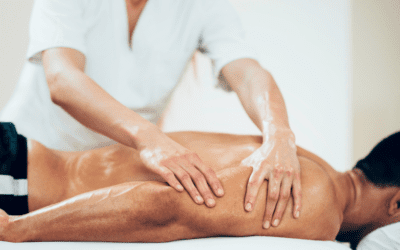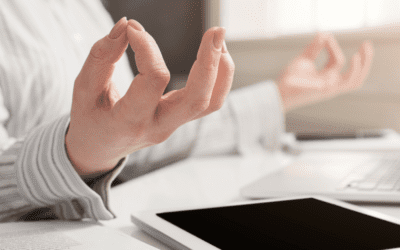Slipped disc series 2/2: What to do if you have a slipped disc, herniated, prolapsed or bulging disc?
Prolapsed or bulging disc: What to do if you have one.
Following our last blog where we discussed 5 of the main slipped disc myths, in this blog we talk more about what causes herniated and bulging discs. We also discuss how you can help yourself if you suspect you may have one.
Of course, if you are ever in doubt whether you have a ‘slipped disc’, herniated, prolapsed or bulging disc, we’d recommend booking in to see us for an initial consultation. We can help to identify potential prolapsed disc issues. (And, just before you ask all of the terms we have used refer to the same thing!)
What is a bulging disc or slipped disc?
A bulging disc occurs where the jelly-like substance in the centre of a vertebral disc starts to prolapse, or move, from the centre towards the outside ‘annular fibres’.
In a bulging disc, the effect of this movement is, as the name suggests, a bulge. In a slipped disc, ruptured or herniated disc we usually refer to the point where this inner substance has ruptured through the annular fibres. This, in turn, starts to affect other local structures. It may cause pain if it create irritation, impingement or undue effect on local nerves. This can include the sciatic nerve and may lead to sciatic pain.
5 slipped and bulging disc myths
What causes movement of the disc for it to bulge?
There are many reasons why someone may have a bulging disc. The two main causes are wear and tear to the disc itself or damage to the surrounding spine.
Wear and tear to the disc
The disc can become less resilient to biomechanical stresses as we age. Commentary suggests wear and tear of the disc can occur because of improper movement and misalignment leading to a wearing of joints. It also goes towards more general reasons such as poor hydration and reduced flexibility due to age.
Damage to the surrounding bony structures: The spine
Trauma and injuries can create changes within joints and can also affect surrounding structures. This may be the case with compression fractures, for example. Bony fragments can cause small imperfections in the outer disc layers and this, in turn, can create weak points where bulging discs can arise.
Suspect you have a bulging disc or slipped disc?
STEP ONE: Get it checked out
This seems so basic in terms of advice. That said, we’d put money that most people will instinctively prefer our other tips than this one. Whilst it’s really easy to put it off, knowing exactly if you have a slipped or bulging disc is key towards knowing how best to manage it. It’s actually quite simple for us to test for at our initial consultation session if you’d like us to check. Whilst we find it common for many to fear that they have a slipped disc, we find it is also common for there to be many other causes to create low back pain or sciatic type pain, as if it were a slipped disc.
STEP TWO: Exercise
I know what you’re thinking. It hurts. And, it hurts to move too. And yet, exercise forms a key part of it’s rehabilitation. The key is to know exactly how to strengthen your body to support you best.
Be cautious of heavy weight lifting
Please be cautious with those who say that vigorous or heavy weight-based training is best at this point. Whilst activities such as deadlifts can indeed strengthen your low back muscles, they can also contract them. This may create additional twist, strain or shearing forces on your spine and discs, especially if not performed with good style or posture.
Finding balance within imbalance
It is common when you have a bulging disc for your body’s self-compensation and protection mechanism to kick in. Locate muscles that are weaker and muscles that are supporting you too strongly and create exercise plans to assist. The most helpful routines may not be the most balanced here and you may find exercises targeting other muscle groups, such as your core muscles, may be of assistance. If in doubt or you are unsure, do get in touch with us or book in for a consultation. (It’s what we are trained to help with!)
Don’t overdo it
It’s easy to over-rely on exercise as the solution for a bulging disc or slipped disc. The reality is however is that you could, in theory at least, create additional stresses and wear and tear if you hammer the exercise home. Take rest days, don’t overdo it and listen to your body. Instead check your postures, how you sit and how you walk. These will give you extra potential for improvement without overdoing it.

STEP 3: Try Chiropractic care – being mindful of its limitations
There are some studies to suggest that Chiropractic care may assist with pain reduction and functional mobility where there are disc issues.
Current general consensus, however, is that there isn’t enough research to make claims that either Chiropractic or Osteopathy may help the discs directly. As a result it stays off the list of things we can help with and is not listed specifically on the Advertising Standards Authority list of what Chiropractors can and can’t help with.
Indeed many Chiropractors also believe that some adjustments at the level of a bulging or slipped disc are contraindicated (a no-no), especially where there is found to be significant impingement on nerves.
Similarly, for the sake of complete clarity, there is no evidence to suggest that a herniated disc can ‘slip’ back into place. Additionally, as you would expect, Chiropractic care can not assist with putting back ‘nucleus pulposus’ material once it has has herniated out. In these circumstances often more medical routes are necessary, such as surgery.
How can Chiropractic care help whilst staying safe and appropriate?
So, the focus of any Chiropractic care often remains around the area instead where there is sufficient rationale for care to proceed. Whilst this may seem counter-intuitive on the face of it, such focus around the joints concerned help to mobilise or take additional forces off the mechanical structures of the spine and joints and many do report some form of benefit or relief, albeit not at the level to say it is appropriate or effective for everyone.
A key benefit of Chiropractic care when the treatment research remains low
Chiropractors are trained to identify where there are issues relating to slipped discs or disc bulges. If we can help at Connective Chiropractic we will and, if not, we will refer you to another healthcare expert who can.
We find that many incorrectly self-diagnose that they have a disc issue. It is common to find from our in-clinic testing that things aren’t always as bad as they may at first seem and are often able to help.
STEP 4: LOSE WEIGHT
Research shows that many factors can increase your likelihood for disc issues, including being overweight or obese. Did you know that the likelihood of getting positive treatment outcomes (regardless of the type of treatment) reduce also if you are obese.
STEP 5: STOP SMOKING
Research shows that smoking can affect the general health and recovery rate of the discs and increases the risk of slipped discs and bulging discs
7 Natural ways to reduce back pain
Click here to book an initial consultation at Connective Chiropractic
How Can Sports Massage Help Your Wider Wellbeing And Performance?
We are proud to offer Sports Massage at our Basingstoke Chiropractic clinic. Sports massage can be incredibly beneficial for relieving aches and pains after exercise. However, sports massage can do so much more. Whether you're an athlete, a regular gym-goer or sports...
What does our community say about us? Introducing our patient case story series
This blog introduces our patient case story series, where we find out more about what our community think about us at differing stages of care and from differing demographics, expectations and backgrounds.
Prioritising Mental Health: Working From Home tips series 4/4
This is the fourth of a series of 4 blogs discussing how you can improve your health and wellbeing whilst working from home…
BASINGSTOKE
Connective Chiropractic Ltd,
55 Kingsclere Road,
Basingstoke.
RG21 6XG
01256 639 452

EMPOWERING WELLBEING WITH A CONNECTIVE CHIROPRACTIC MEMBERSHIP
Click here to discover more about our Ultimate Wellbeing Community
Registered Company (10788728) in England & Wales, Registered Address: 55 Kingsclere Road, Basingstoke, Hampshire. RG21 6XG.
Site content last edited 11 September 2023 (Version 1.4) (Version 1.0 - 1st November 2017). Last update Monday 11 September 2023
Copyright: Connective Chiropractic Ltd. All rights reserved. The Connective Chiropractic name and Connective Chiropractic logo are registered trademarks.



